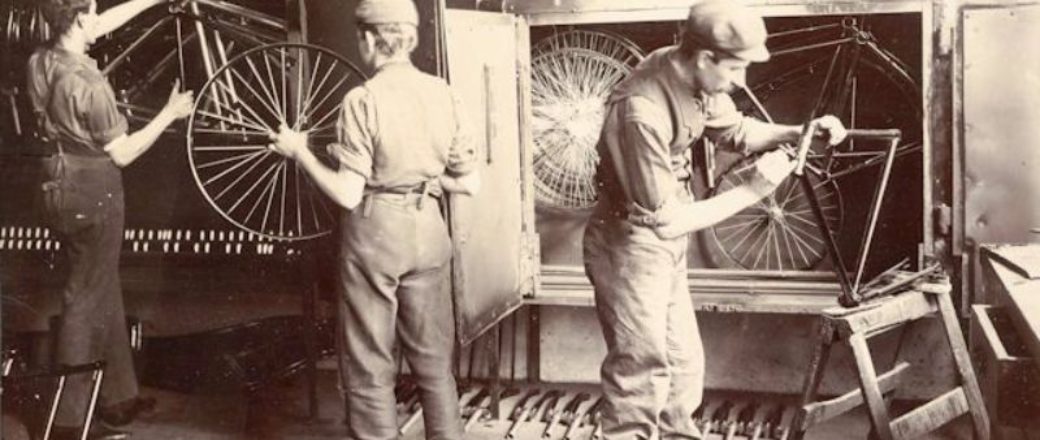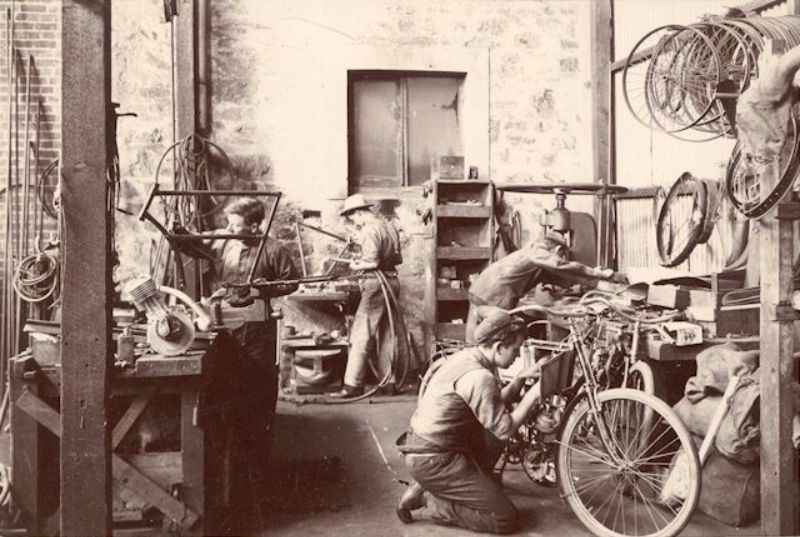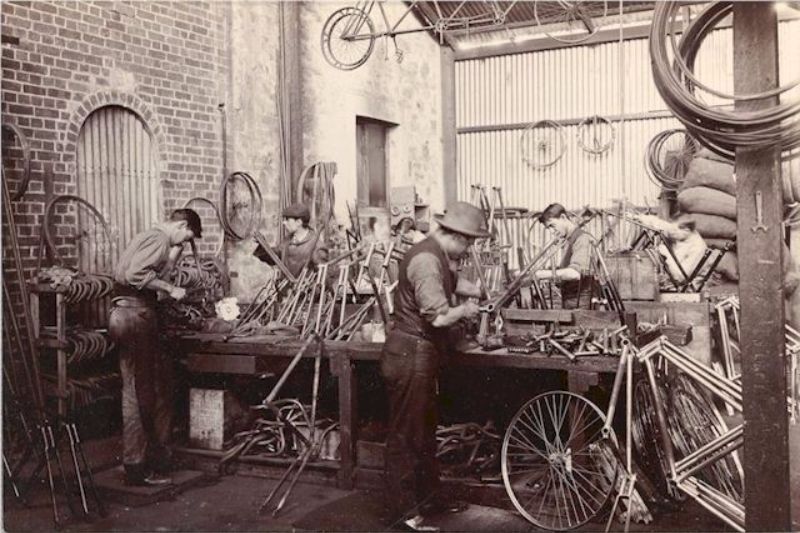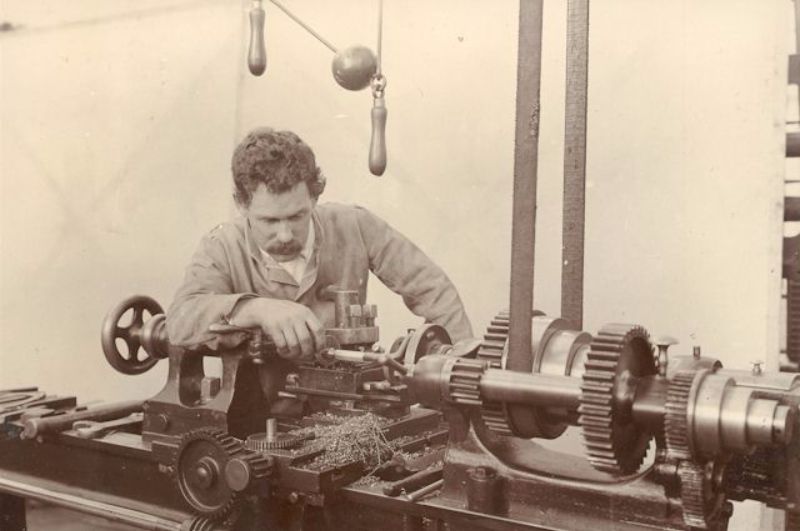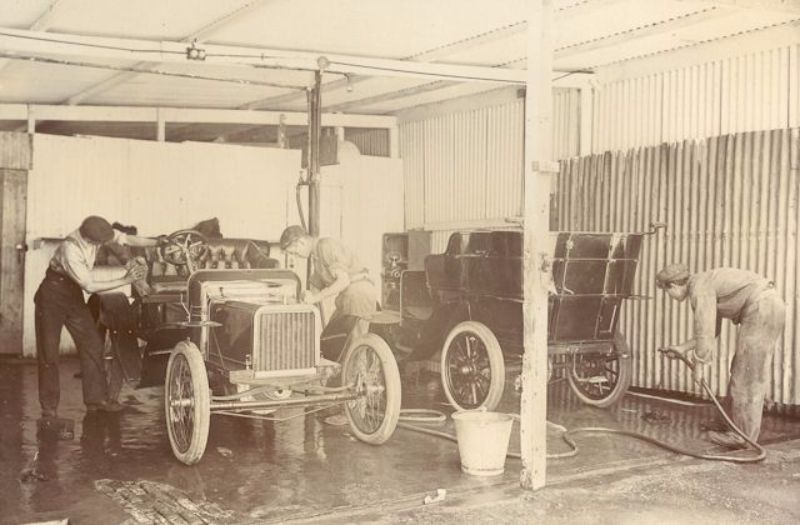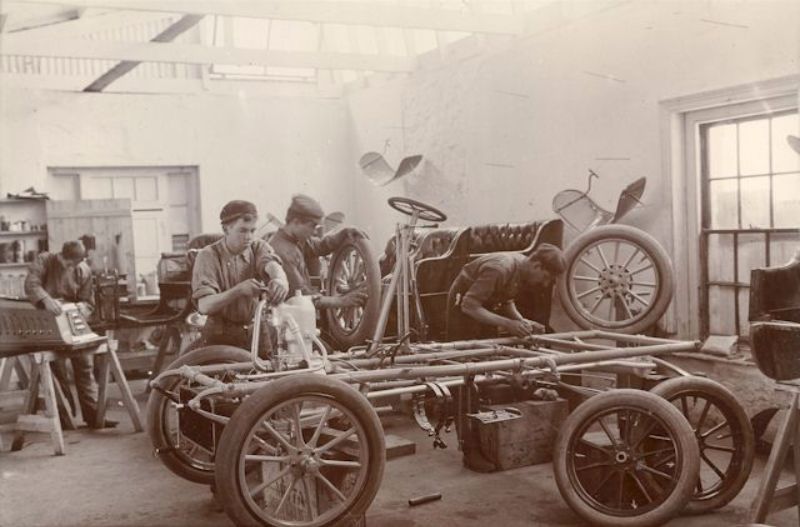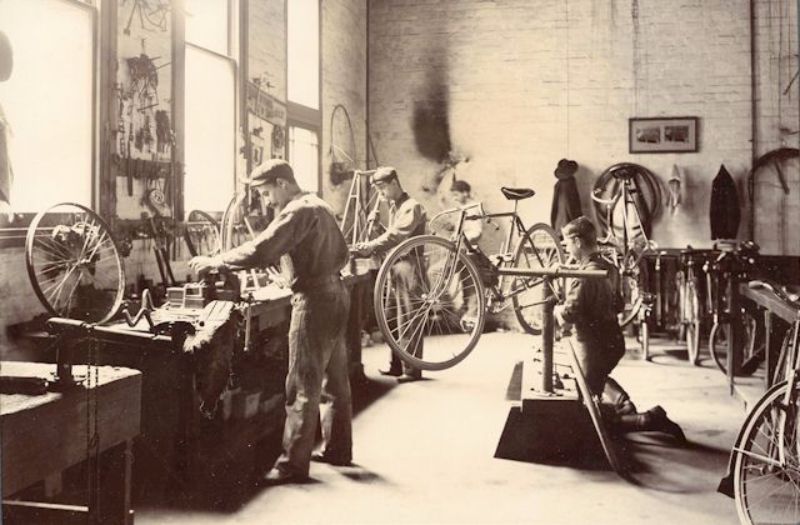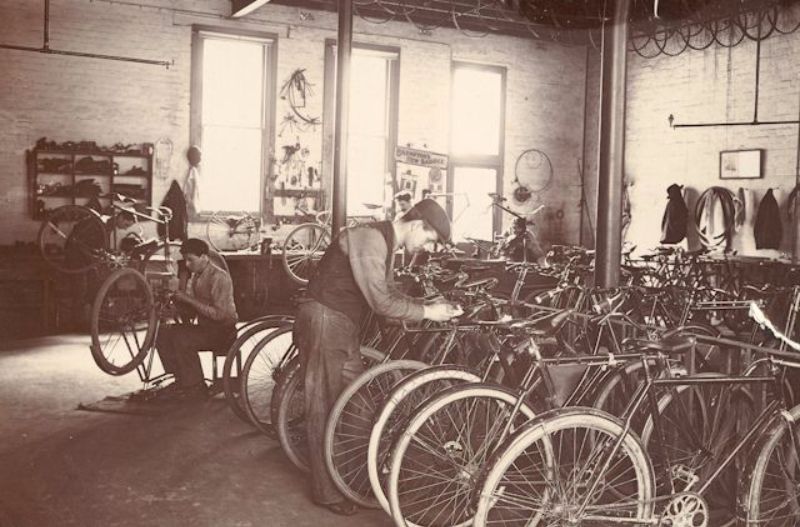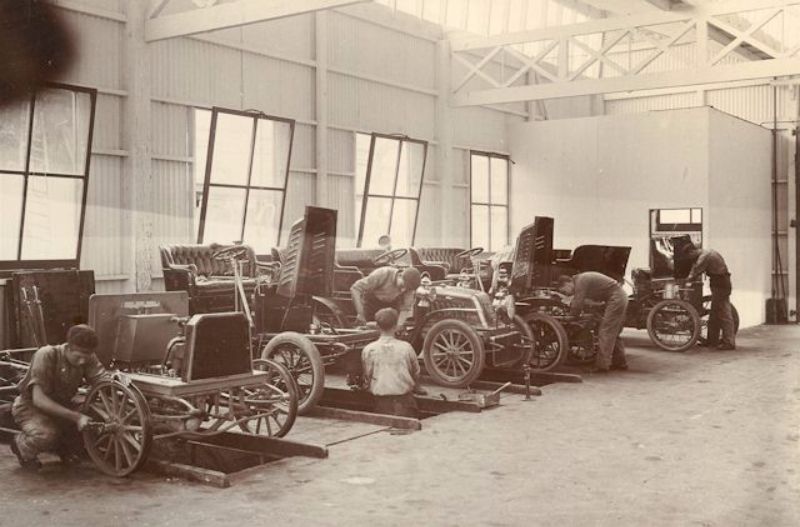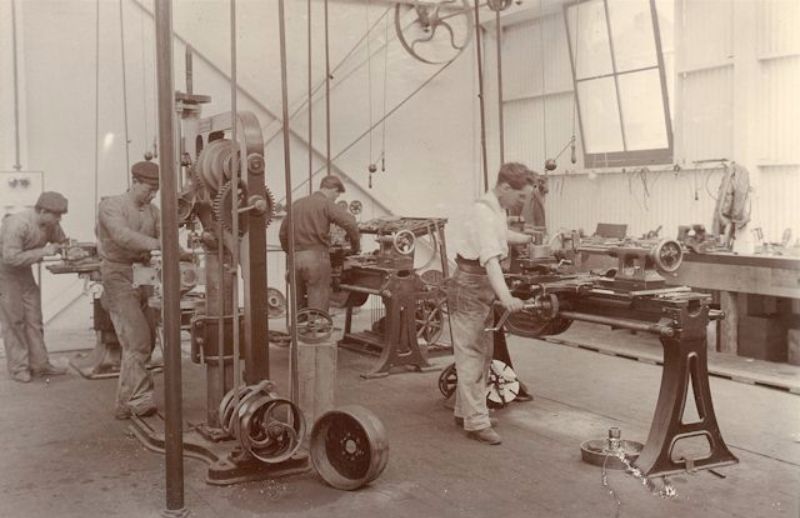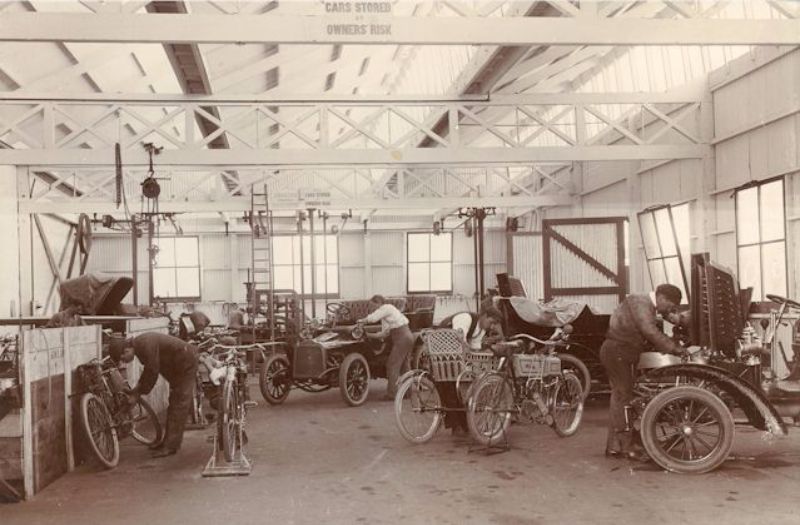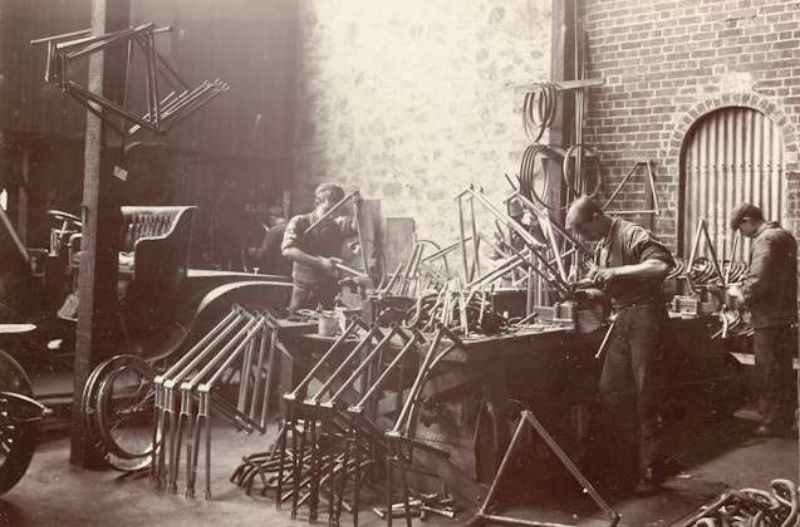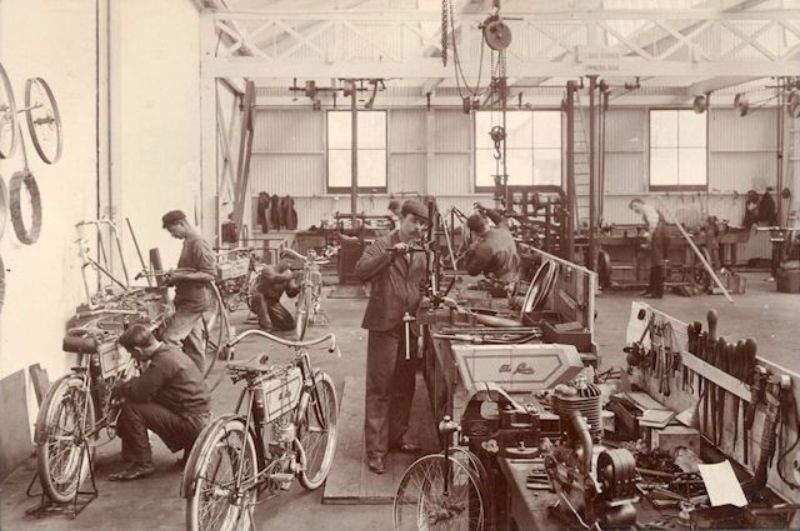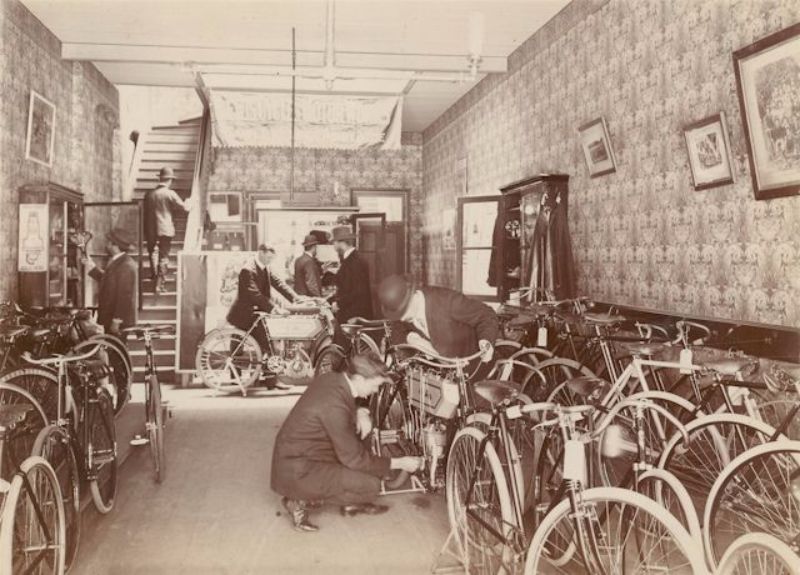In 1900, Lewis Cycle Works made the leap from bicycles to motor driven vehicles with the creation of the Lewis motor car. Built in-house, the company soon realized that there would be no profit in hand-built cars, when they could be more easily and cheaply imported from other countries. The solution was to use their expertise in producing bicycles to start producing motorcycles. Within a year, they had already unveiled their first prototype. This first “motorcycle” was nothing more than a bicycle fitted with a Minerva clip-on motor, but it was a step in the right direction.
By 1903, the motorcycle design had been settled upon and production began. The motorcycles were still powered by a Minerva clip-on engine, but used a new side valve configuration which produced 2 horsepower. Engine size and power increased slowly for the next couple years, but in 1905, Lewis introduced a water cooled model which featured a “radiator” mounted in front of the gas tank. It also had three brakes, rim brakes front and rear operated by hand levers and a rear drum brake operated by a foot pedal. The motor was a vertical single, which produced 2 1/2 horsepower.
The photographs below were taken between 1904 and 1906 at the Lewis Cycle and Motor Works factory, during a time of rapid development for the Lewis motorcycle. Here you can see how the bicycle evolved into a motorcycle and how much work went into producing motorcycles at the turn of the century.
via Riding Vintage

